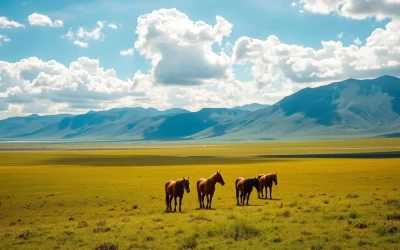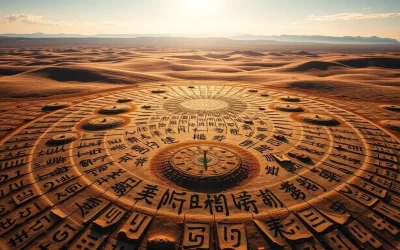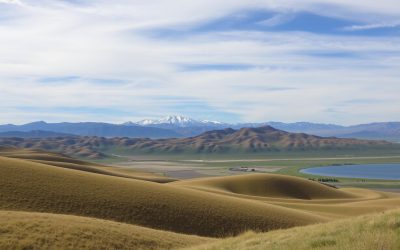Imagine immersing yourself in a land of rich cultural heritage and vibrant traditions. Mongolia’s festivals offer a unique glimpse into the country’s nomadic way of life, providing an authentic cultural experience that goes beyond typical tourist activities.
From intimate village gatherings to grand national celebrations, Mongolian festivals showcase the country’s diverse cultural landscape. Whether you’re attending the Naadam Festival or the Golden Eagle Festival, you’ll have the opportunity to connect with local people and create lasting memories of your visit.
With festivals taking place throughout the year, Mongolia is a year-round destination for cultural travelers. In this article, we’ll explore the top festivals you shouldn’t miss, providing you with practical information and cultural context to enhance your experience.
The Cultural Significance of Mongolian Festivals
Festivals in Mongolia are more than just celebrations; they are a window into the country’s soul, showcasing its nomadic heritage and cultural depth. These events are deeply rooted in the country’s history and traditions, offering a unique experience for visitors.
Mongolian festivals are characterized by their vibrant colors, traditional music, and communal spirit. They provide a glimpse into the country’s rich cultural heritage, from the famous Naadam Festival to the lesser-known local celebrations.
How Festivals Reflect Nomadic Heritage
Mongolian festivals are a reflection of the country’s nomadic roots, with many events centered around traditional practices such as herding, hunting, and horse racing. The Naadam Festival, for instance, features the “Three Manly Games”: wrestling, archery, and horse racing, which are integral to Mongolian culture.
These festivals not only showcase the skills and traditions of Mongolian nomads but also serve as a means of preserving cultural heritage. By participating in or attending these events, visitors can gain a deeper understanding of the country’s history and customs.
Best Times of Year to Experience Mongolian Celebrations
Mongolia’s festival calendar is spread throughout the year, with each season offering unique celebrations and experiences. Summer (June-August) is the peak festival season, with comfortable weather and events like the Naadam Festival drawing large crowds.
| Season | Festivals | Highlights |
|---|---|---|
| Summer (June-August) | Naadam Festival | Wrestling, archery, and horse racing competitions |
| Winter (December-February) | Tsagaan Sar, Ice Festival | Traditional New Year celebrations, ice sculptures, and winter activities |
| Spring (March-May) | Nauryz Festival | Celebration of renewal and the beginning of the herding season |
| Fall (September-October) | Golden Eagle Festival | Showcasing Kazakh eagle hunting traditions and cultural performances |
Planning your visit around these festivals can enhance your experience, allowing you to immerse yourself in Mongolian culture and traditions. However, it’s essential to note that some festivals follow the lunar calendar, so advance planning is recommended.
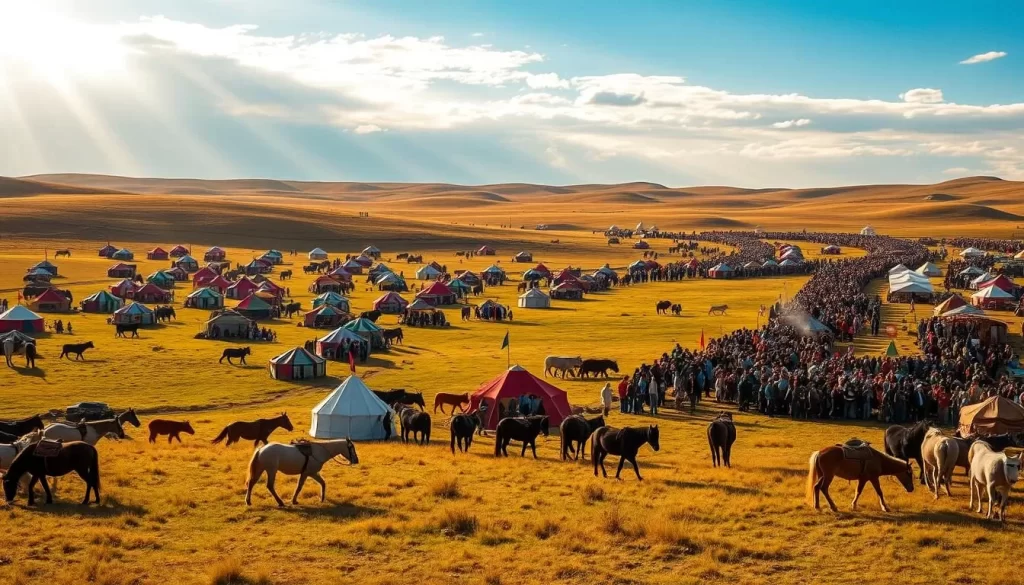
Naadam Festival: Mongolia’s National Celebration
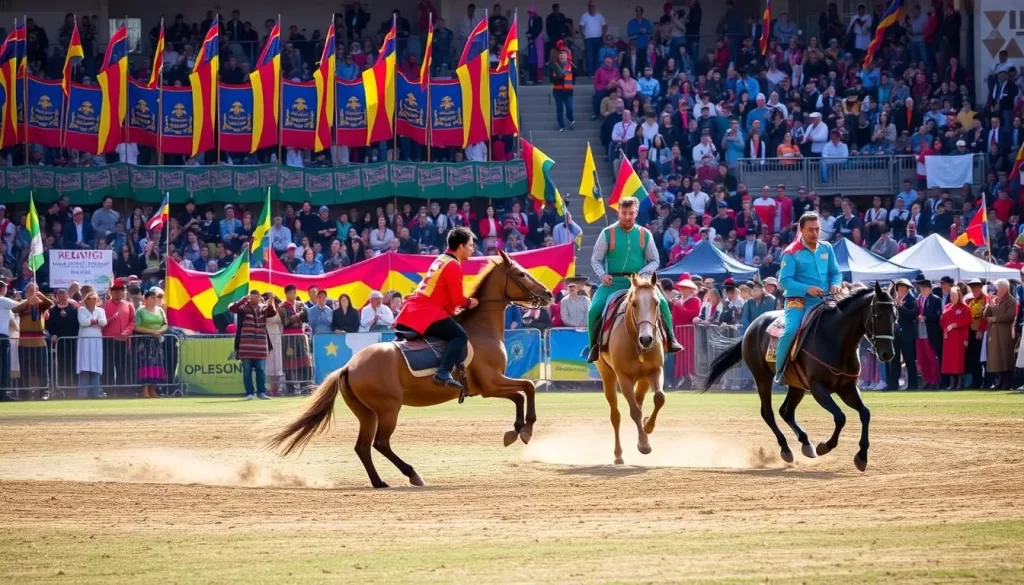
Mongolia’s Naadam Festival is a spectacle like no other, showcasing the country’s rich cultural heritage. This grand celebration is a testament to the country’s nomadic traditions and is an event you won’t want to miss.
The Three Manly Games: Wrestling, Archery, and Horse Racing
The Naadam Festival is centered around the “Three Manly Games”: wrestling, archery, and horse racing. These competitions are not just about showcasing physical prowess but also about honoring the country’s nomadic heritage. Wrestling is considered the most prestigious of the three, with competitors donning traditional attire and performing ritual dances before matches.
Archery and horse racing are also integral parts of the festival, with archers demonstrating their skill and horsemen showcasing the endurance and speed of their horses. These events are a thrilling experience and a great way to immerse yourself in Mongolian culture.
When and Where to Experience Naadam
Naadam takes place annually in July, typically around the 11th to 13th, in Ulaanbaatar, the capital city of Mongolia. The festival is held at the National Sports Stadium, which is transformed into a vibrant celebration of Mongolian culture. To experience Naadam like a local, plan to arrive early to secure good viewing positions, especially for the opening ceremony and wrestling finals.
Tips for First-Time Naadam Visitors
When attending Naadam for the first time, it’s essential to be mindful of your diet, especially when trying traditional foods like khuushuur and airag. While these delicacies are delicious, they might be challenging for your stomach to adjust to. Additionally, be sure to book your accommodations and Naadam tickets well in advance, as everything can sell out quickly during the festival season.
Some practical tips for enjoying Naadam include wearing comfortable shoes, bringing sun protection, and being respectful of cultural sites. It’s also a good idea to hire a local guide to enhance your appreciation of the event and its cultural significance.
Tsagaan Sar: Mongolian Lunar New Year
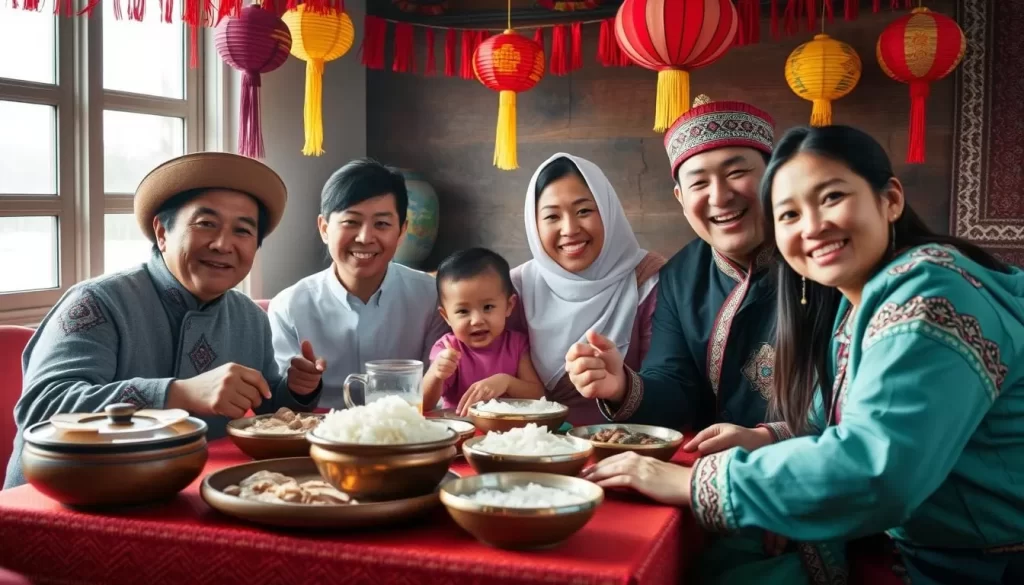
As winter slowly loosens its grip, Mongolians welcome the arrival of spring with Tsagaan Sar, their Lunar New Year celebration. This significant holiday is a time for renewal, family reunions, and traditional festivities that showcase the rich cultural heritage of Mongolia.
Traditional Foods and Customs of Tsagaan Sar
During Tsagaan Sar, traditional foods play a central role in the celebrations. You can expect to be treated to a variety of dishes, including boortsog (meat pies) and airag (fermented mare’s milk). The customs surrounding these foods are steeped in tradition, with elders being respected and younger family members showing deference through the offering of hadag (ceremonial scarves).
The celebration is also marked by specific rituals, such as the cleaning of homes and the preparation of special foods, symbolizing the purification and renewal associated with the Lunar New Year.
Experiencing Tsagaan Sar with Local Families
One of the most authentic ways to experience Tsagaan Sar is by being invited into a local Mongolian family’s home. This allows you to participate in the traditional customs and ceremonies firsthand, offering a unique insight into the country’s cultural practices.
When visiting a Mongolian home during Tsagaan Sar, it’s customary to bring gifts such as high-quality vodka, chocolates, or small items from your home country as a sign of respect. You can expect a warm welcome, with traditional greetings and a marathon of eating and drinking throughout the day.
Participating in Tsagaan Sar with local families provides a window into Mongolian family dynamics, values, and hospitality traditions that are not typically visible to tourists. It’s an opportunity to immerse yourself in the local culture and create meaningful connections with the people.
Golden Eagle Festival: Witnessing Ancient Hunting Traditions
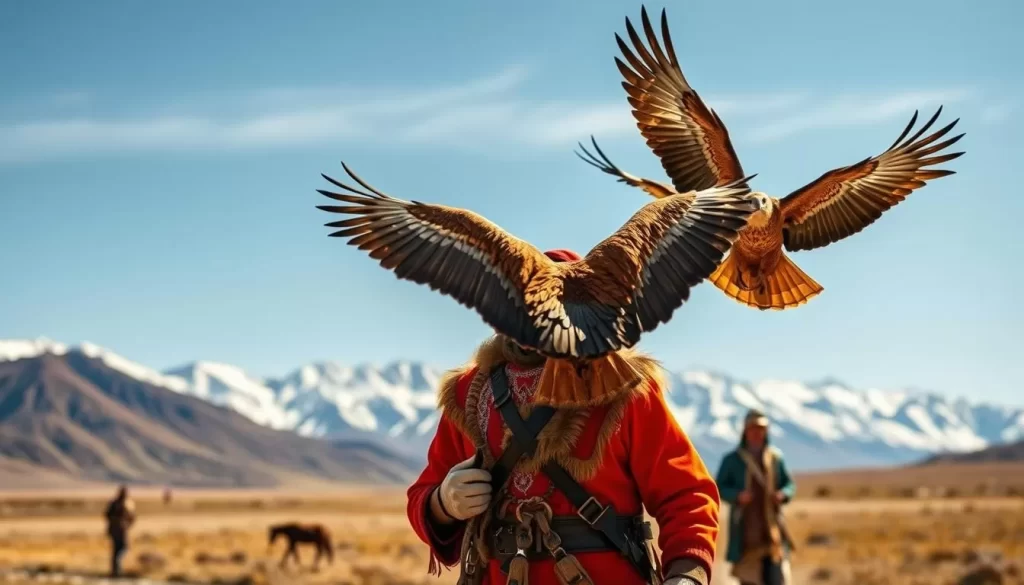
Experience the thrill of the Golden Eagle Festival, a unique cultural event that showcases the ancient traditions of Kazakh eagle hunters. This spectacular festival is a celebration of the rich cultural heritage of the Kazakh people and their remarkable bond with golden eagles.
The Cultural Heritage of Kazakh Eagle Hunters
The Golden Eagle Festival is more than just a competition; it’s a celebration of the cultural heritage of Kazakh eagle hunters. For centuries, the Kazakh people have practiced the art of eagle hunting, passing down their skills and traditions from generation to generation. The festival provides a unique opportunity to witness this ancient tradition up close and appreciate the skill and precision of the eagle hunters.
The Kazakh eagle hunters, with their majestic golden eagles, demonstrate their incredible bond and hunting prowess in thrilling simulations. The eagles swoop down at breathtaking speeds, landing gracefully on their hunters’ arms, showcasing their skill and precision.
Festival Highlights and Photography Opportunities
The Eagle Festival is a feast for the eyes, with a variety of exciting events and cultural performances. Some of the highlights include the parade of hunters, eagle release competitions, hunting demonstrations, and awards for the best-dressed hunter and fastest eagle. You can also enjoy traditional Mongolian sports such as horse racing, wrestling, and Uriankhai archery, which add to the vibrant atmosphere of the festival.
For photographers, the Golden Eagle Festival offers a wealth of opportunities to capture stunning images. With the dramatic Altai Mountains as a backdrop, you can capture both the cultural and natural elements of the festival. Tips for photographers include being mindful of the lighting, using the right camera settings to capture fast-moving eagles, and asking permission before photographing the hunters and their eagles.
Thousand Camel Festival in the Gobi Desert
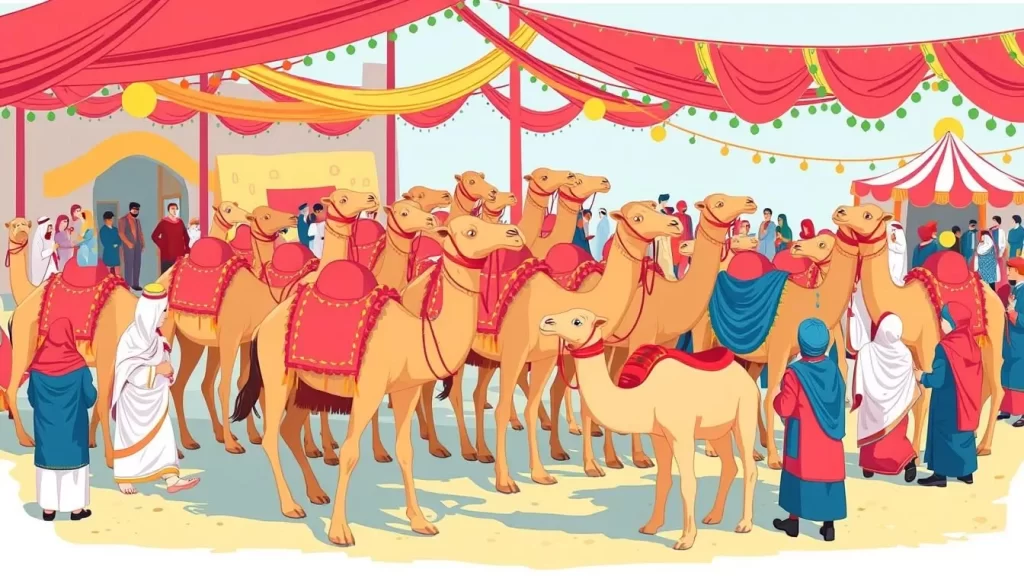
Deep in the Gobi Desert, a unique celebration takes place, honoring one of Mongolia’s most treasured animals: the Bactrian camel. The Thousand Camel Festival is a vibrant showcase of Mongolian culture and traditions, centered around these magnificent creatures.
The Bactrian camel has been a cornerstone of Mongolian nomadic life for centuries, providing transportation, milk, meat, and fiber. The festival, established in 1997, aims to preserve the declining population of domestic Bactrian camels and celebrate their importance to Gobi communities.
Camel Racing and Cultural Performances
The festival features camel racing, a thrilling spectacle that draws participants from across the region. Alongside the races, cultural performances including traditional music and dance add to the festive atmosphere, showcasing the rich heritage of Mongolian people.
Celebrating the Bactrian Camel’s Importance
The festival highlights the unique adaptations of Bactrian camels to the harsh Gobi environment, including their ability to survive extreme temperatures and long periods without water. It also underscores the economic importance of camels to local herders, with a growing market for camel wool products and potential for camel-based tourism.
Traditional camel husbandry practices are showcased, including demonstrations of milking, wool processing, and loading techniques. The festival serves as an educational platform for younger generations, teaching them about traditional camel herding knowledge and supporting conservation efforts for the critically endangered wild Bactrian camel.
Ice Festival at Lake Khovsgol
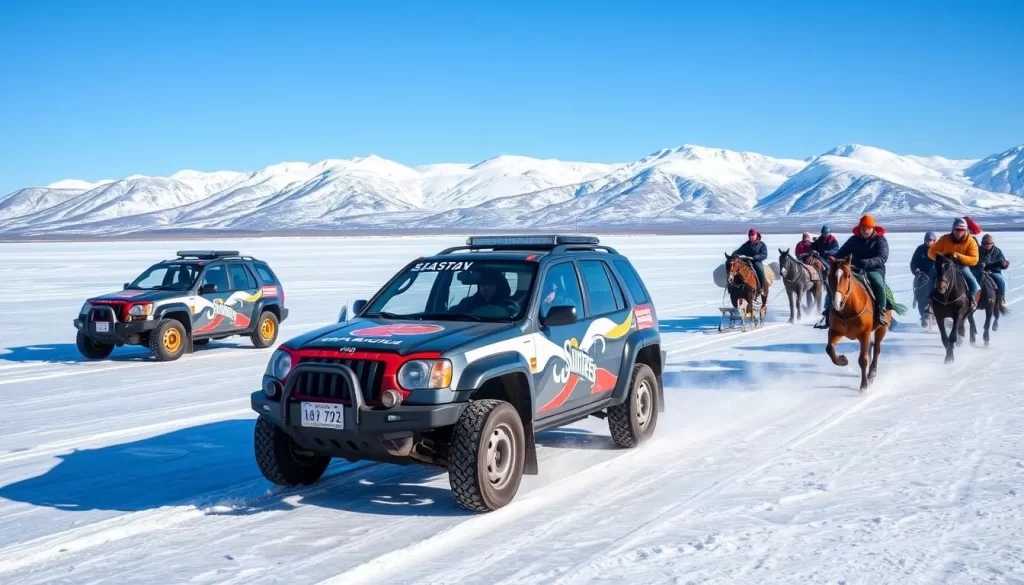
Experience the enchanting Ice Festival at Lake Khovsgol, where winter transforms into a breathtaking spectacle. This unique event takes place on the frozen surface of Lake Khovsgol, offering a range of thrilling activities and breathtaking scenery.
Winter Activities and Ice Sculptures
The Ice Festival features a variety of winter activities, including horse-sled races, ice rally-driving, wrestling, and tug-o-war, all held on the frozen lake. The ice is often so clear that you can see several meters down into the frozen lake, making it a perfect spot for photography. The festival also includes ice sculptures, adding to the enchanting atmosphere.
Experiencing Extreme Winter in Northern Mongolia
Visiting Lake Khovsgol during the Ice Festival means experiencing one of the deepest winters on the planet, with temperatures regularly dropping below -35°C (-31°F). To make the most of your visit, it’s essential to pack appropriate cold-weather gear, including layered clothing, extremity protection, and battery preservation for your cameras and phones. You can stay with local families or in tourist ger camps adapted for winter conditions, where you can enjoy traditional heating methods and winter foods.
The journey to Lake Khovsgol in winter is an adventure in itself, involving flights to Murun and overland travel through snow-covered landscapes. Lake Khovsgol holds spiritual significance to local communities, with shamanistic beliefs and winter rituals that may coincide with the festival. The reward of experiencing the pristine winter landscapes and star-filled night skies makes enduring the extreme conditions worthwhile for adventurous travelers.
Spring Celebrations: Nauryz Festival
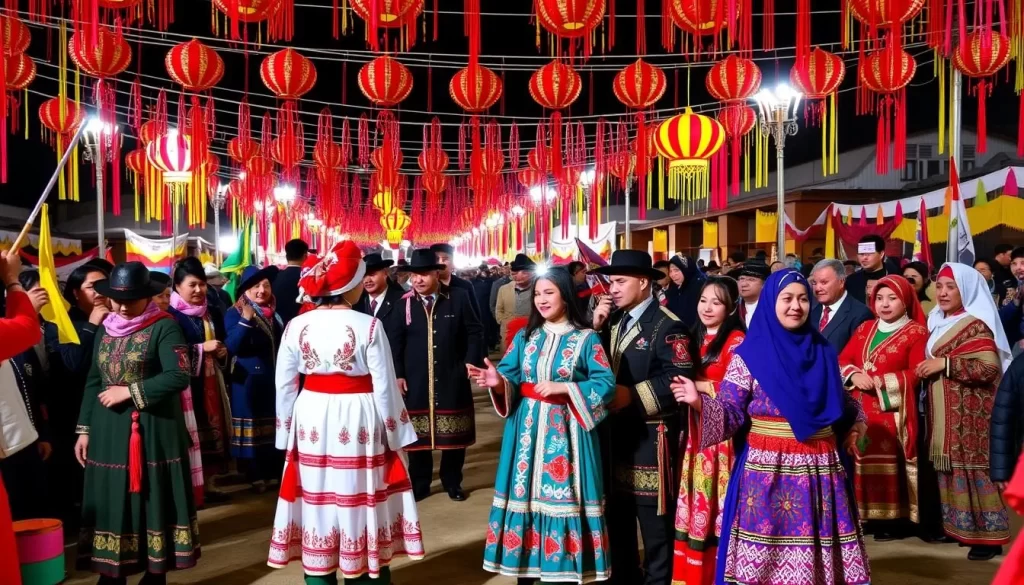
In the heart of Western Mongolia, the Kazakh community welcomes spring with the vibrant Nauryz Festival. This significant celebration, observed on March 21-22, marks the spring equinox and the beginning of a new year for the Kazakhs. Nauryz, meaning ‘renewed life,’ symbolizes the arrival of spring and is a time when people come together to celebrate renewal and prosperity.
Kazakh New Year Traditions in Western Mongolia
The Nauryz Festival is deeply rooted in Kazakh culture, reflecting their rich heritage and traditions. You can experience the warmth of Kazakh hospitality as communities gather in central areas for public celebrations. The festival features traditional Kazakh music played on instruments like the dombra (two-stringed lute) and kobyz (horsehair fiddle), setting the tone for a joyous celebration.
During Nauryz, you can witness traditional dances that tell stories of nomadic life, hunting, and historical events significant to Kazakh culture. These performances are not just entertaining but also serve as a way to preserve and pass down cultural heritage to younger generations.
Cultural Performances and Spring Rituals
The Nauryz Festival is a spectacle of cultural performances, including competitive games that are an integral part of the celebrations. You can watch horse games like kokpar (a form of polo played with a goat carcass) and traditional wrestling, which showcase the strength and agility of the participants. Additionally, the festival includes spring rituals that symbolize renewal, such as the planting of new trees or the sprouting of wheat grains indoors to represent growth and prosperity.
The festival also highlights the importance of music and poetry in Kazakh culture, with traditional poetry recitations and aitysh (improvised poetry competitions) that showcase Kazakh oral traditions. As you participate in or observe these festivities, you’ll gain a deeper understanding of the Kazakh way of life and their connection to nature and community.
Lesser-Known Mongolian Festivals Worth Experiencing
While Mongolia’s Naadam Festival is world-renowned, the country hosts a variety of lesser-known festivals that offer a unique glimpse into its rich cultural heritage. These events showcase the diversity and vibrancy of Mongolian culture, from traditional celebrations to modern music festivals.
Yak Festival in the Khangai Mountains
The Yak Festival, held in the picturesque Khangai Mountains, celebrates the importance of yaks in Mongolian culture. You can witness traditional yak herding competitions, enjoy local cuisine, and experience the warm hospitality of Mongolian herders. This festival is a unique opportunity to explore the country’s rural heritage.
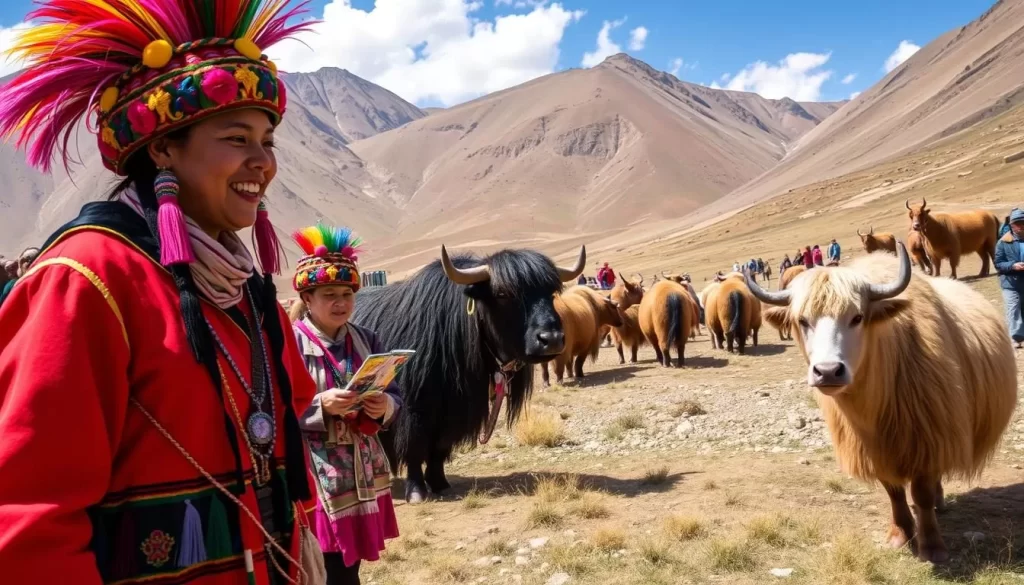
Danshig Naadam Religious Festival
The Danshig Naadam Religious Festival is a significant cultural event that combines traditional Naadam competitions with religious ceremonies. Held at the Erdene Zuu Monastery, this festival offers a blend of spiritual and cultural experiences, showcasing Mongolia’s rich Buddhist heritage.
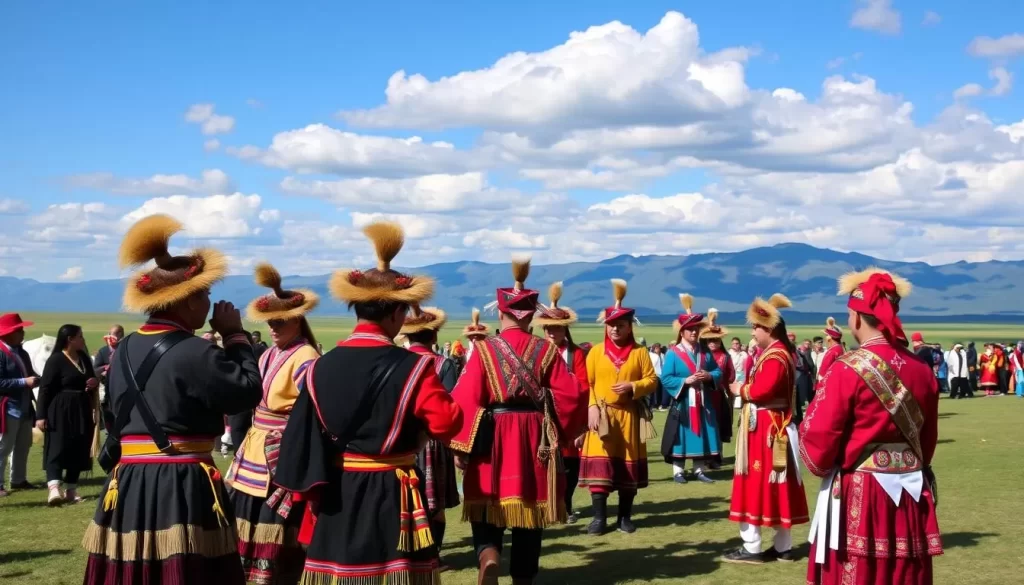
Playtime International Music Festival
For a modern twist, the Playtime International Music Festival is Mongolia’s largest outdoor music event, featuring a diverse lineup of local and international artists. Held annually in July near Ulaanbaatar, this festival represents contemporary Mongolian culture and appeals to younger generations. You can enjoy rock, metal, indie, and electronic music amidst the beautiful Mongolian steppe landscapes.
Experience the vibrant atmosphere, with camping options, diverse food vendors, and art installations. Playtime festival is a cultural bridge between Mongolia’s nomadic heritage and its rapidly modernizing urban culture.
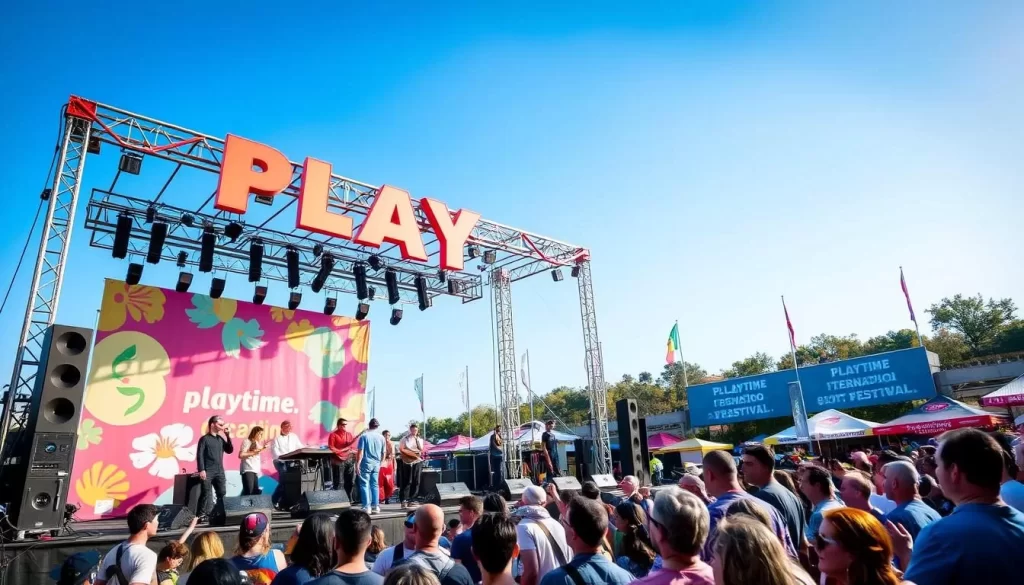
These lesser-known festivals offer a chance to experience the authentic and diverse cultural landscape of Mongolia. Whether you’re interested in traditional herding practices, religious ceremonies, or modern music, there’s a festival in Mongolia that caters to your interests.
Planning Your Trip Around Mongolia’s Top Festivals
With so many exciting festivals happening throughout the year, planning your Mongolian adventure in advance is essential. Mongolia is home to a diverse range of festivals, each offering a unique glimpse into the country’s rich cultural heritage. From the Naadam Festival to the Golden Eagle Festival, these events are not just entertaining but also deeply rooted in the country’s history and traditions.
To ensure that you make the most of your visit, it’s crucial to plan ahead. Naadam season is a busy time, and everything from accommodations to Naadam tickets can sell out quickly. Booking several months in advance will save you a lot of stress and ensure you enjoy the festivities to the fullest.
Understanding the timing and geographical distribution of these festivals is key to planning your trip. Here’s a breakdown of what you need to consider:
- Festival Calendar: Organize your trip according to the festival season. Summer is ideal for Naadam, while winter is perfect for the Ice Festival at Lake Khovsgol.
- Transportation: Many festival locations are in remote areas, requiring 4WD vehicles, domestic flights, or long overland journeys. For instance, Dalanzadgad is approximately 600 kilometers from Ulaanbaatar, making a dedicated guide or driver a wise choice.
- Clothing and Equipment: Pack according to the festival season. Summer festivals require sun protection, while winter events like the Ice Festival demand extreme winter gear.
- Tour Operators: Consider working with tour operators who specialize in festival travel. They can secure tickets, arrange transportation, and provide cultural context to enhance your experience.
Budget considerations are also vital. Peak festival seasons, especially around Naadam and the Golden Eagle Festival, can be expensive. However, attending smaller local celebrations can offer a more budget-friendly alternative without compromising on the cultural experience.
| Festival | Season | Location | Key Activities |
|---|---|---|---|
| Naadam Festival | Summer | Ulaanbaatar | Wrestling, Archery, Horse Racing |
| Golden Eagle Festival | Winter | Ölgii | Eagle Hunting Demonstrations |
| Ice Festival | Winter | Lake Khovsgol | Ice Sculptures, Winter Activities |
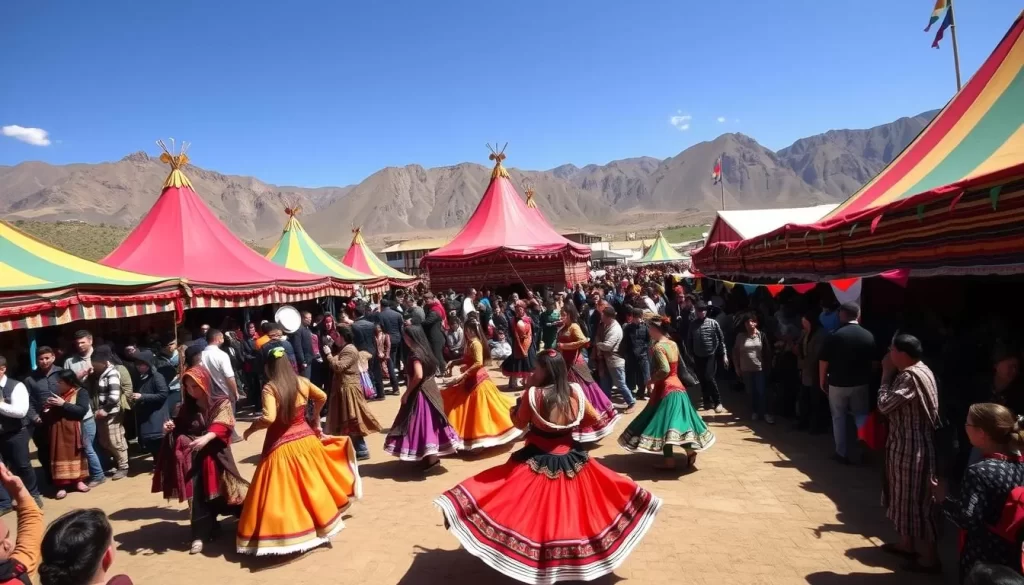
Health and safety are also important considerations. Be prepared for extreme weather conditions, and take necessary precautions for food safety at outdoor events. For mountain festivals, be aware of altitude considerations.
By carefully planning your trip around Mongolia’s top festivals, you can have a truly immersive and memorable experience. Whether you’re watching eagle hunters in action or enjoying the horse racing at Naadam, Mongolia’s festivals are sure to leave a lasting impression.
Conclusion
Stepping into Mongolia’s festivals is like stepping into a world of ancient traditions and modern celebrations. From the revered Naadam Festival to the vibrant Tsagaan Sar celebrations, and from the Golden Eagle Festival to the Playtime International Music Festival, Mongolia offers a diverse tapestry of cultural experiences.
Experiencing these festivals provides a unique lens through which to understand Mongolia’s culture, life, and history. You’ll witness the country’s nomadic heritage, seasonal changes, and spiritual traditions firsthand. Whether you’re sharing fermented mare milk with nomads or cheering at a wrestling match, these interactions create lifelong memories.
Planning your trip around one or more of these festivals can make your Mongolian adventure more purposeful and memorable. While it requires more planning and sometimes challenging conditions, the cultural rewards far outweigh the difficulties. So, step beyond your comfort zone and immerse yourself in Mongolia’s festival traditions for an unforgettable adventure.

